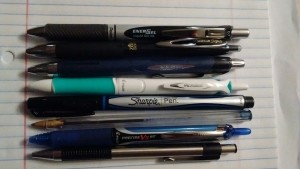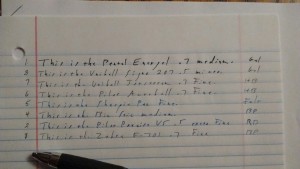I recently got tired of taking everyone else’s word for the message of The Shack and its theological underpinnings. So, I decided to take the radical step of actually buying and reading the book for myself to see what all the fuss was about.
Let me start by saying that the last piece of modern Christian fiction I read was This Present Darkness and that was around 30 years ago. Christian fiction just isn’t my thing and I’m not this book’s target audience.
******************* SPOILERS * SPOILERS * SPOILERS * SPOILERS ********************
Having said that, The Shack seemed to avoid what I would consider Christian cliches for the first few chapters. And then God showed up and things took a drastic turn for the overly melodramatic. (Well, the main character constantly referring to his daughter’s kidnap and murder as The Great Sadness ever since chapter one was pretty cheesy.)
Theological issues pop up as soon as the conversations between Mack (the protagonist/first person narrator) and God (represented as Papa (the Father), Jesus, and Sarayu (the Spirit)) start taking place. Papa explains to Mack in chapter six that none of the miracles Jesus performed on Earth were done using the powers of His inherent Godhood. Instead, Papa tells Mack that Jesus was fully human at that time (which is true but …)and was able to work wonders because He was so closely aligned with God (“… he could express my heart and will into any given circumstance.”). Papa goes on to explain that she (yes, God is gender fluid) would be incapable of love without having the other members of the Trinity to express love to and that she can’t act apart from love. I’m not quite sure where any of this is found in the Bible.
In chapter 10, Jesus and Mack are talking about the relationship between the three members of the Godhead. Jesus says that the members of the Trinity are submitted to each other out of love and respect and that all three of them are submitted to humanity out of a desire for Jesus to have “brothers and sisters who will share life with (him).” On a similar note, back in chapter 7, the Trinity eagerly receives news of Mack’s kids because they have limited their omniscience out of respect for him. This is elevating man way, way more than indicated in the Bible. Big chunks of Job and Psalms, among others, say that humankind is far inferior to God. This doesn’t seem to be the kind of theology The Shack is concerned with.
Chapter 11 allows us to meet the personification of Papa’s wisdom, Sophia. She introduces Mack to the idea of universal salvation, putting Mack in the role of a judge, then telling him he has to choose two of his kids to send to Heaven and three to put in Hell. The idea of personal salvation or culpability never enters into the equation. This is brought home in chapter 13 when Papa tells Mack that He is reconciled to the whole world through Jesus’s death and resurrection. Mack says, “You mean those who believe in you, right?” God replies, “The whole world, Mack. All I am telling you is that reconciliation is a two-way street, and I have done my part, totally, completely, finally. It is not the nature of love to force a relationship, but it is the nature of love to open the way.”
At any rate, the story continues on and ends with forgiveness, hope, love, and warm fuzzies all around. I understand that this is a work of fiction but it is far too easy, I think, for Christians who aren’t solidly grounded in the Word to think the God portrayed here is representative of the one true God. And it just reinforces the generic, all forgiving, universal God that many non-Christians bring to mind when they think about the deity.
The Shack differs from other potentially controversial novels like the Harry Potter series, in my view, in that the story’s focus is on the author’s take on Christianity through the dialogues that make up the majority of the book. It’s essentially a philosophical treatise and everything else in the book is secondary to the ideas it proposes. We as Christians need to be aware of the message in The Shack in order to counter its claims and lead people to repentance and true faith in Jesus. Anyone basing their theology on The Shack will find it an unsteady foundation.


